10 Most Expensive Antique Colored Glassware Pieces
Antique colored glassware is a stunning reflection of craftsmanship and history, with pieces that have captivated collectors for generations. These items are not only beautiful but also incredibly valuable due to their rarity and the artistry involved in their creation. From intricately designed vases to delicate glassware, each piece tells a unique story. The rich colors and fine details make them highly sought after in the world of antiques. Over the years, certain pieces have become iconic, fetching prices that reflect their significance in the world of art glass. These timeless treasures continue to be admired and cherished by collectors worldwide.
This post may contain affiliate links, which helps keep this content free. Please read our disclosure for more info.
Tiffany Favrile Glass Vase
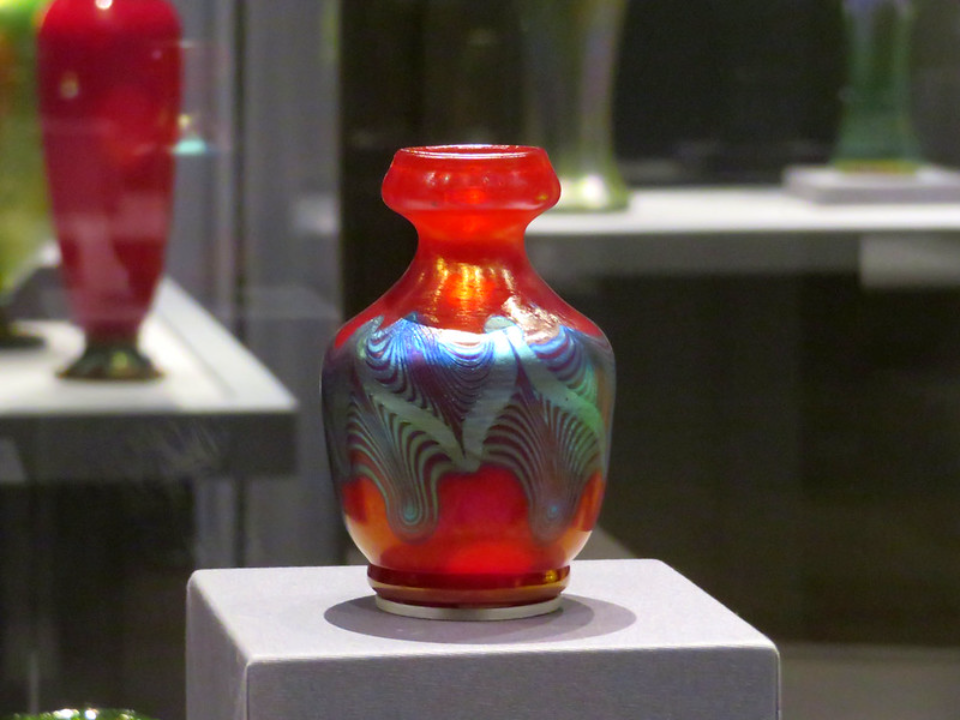
Tiffany’s Favrile glass vases are well known for their rich colors and shimmering finish. The Favrile technique uses blended colors and iridescence directly in the glass, which sets it apart from painted or coated pieces. Louis Comfort Tiffany designed these pieces in the late 19th century, and they remain some of the most desired among collectors. Common colors include gold, blue, and green, often with feathered or floral patterns.
A well-preserved Tiffany Favrile vase can sell for around $10,000 depending on its size and detailing. More unusual designs with strong color shifts or embossed elements may reach $20,000 or more at high-end auctions. Each vase is unique since the process involved hand-blown techniques and spontaneous decoration during formation.
Galle Cameo Glass Lamp Base
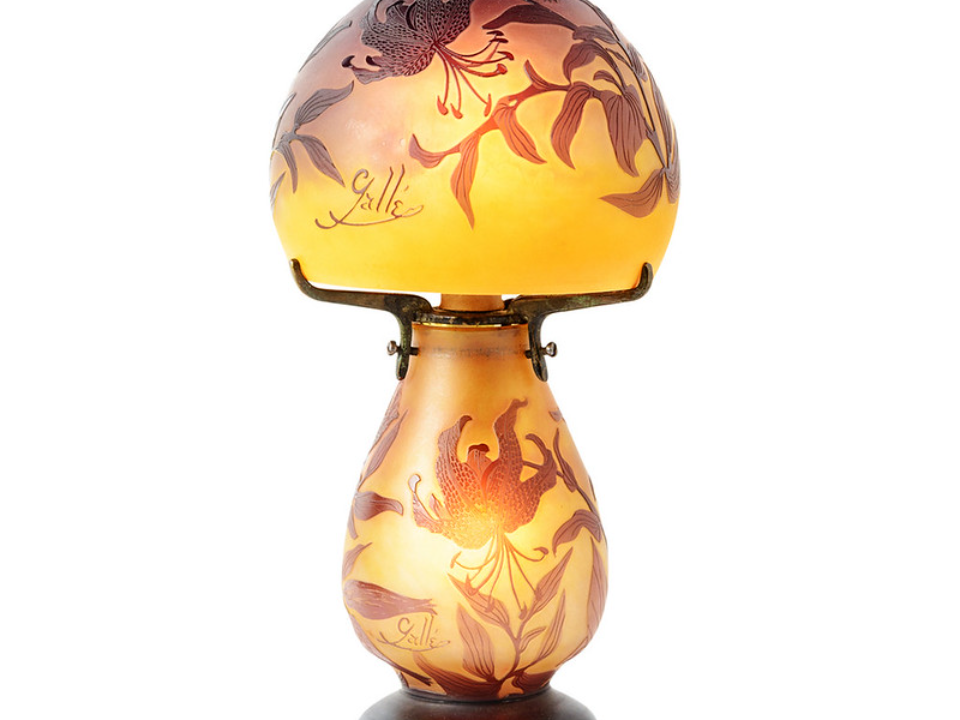
Émile Gallé, another French glassmaker, produced cameo glass similar to Daum Nancy but often with bolder themes and deeper layers. His works range from floral motifs to scenes of natural beauty. Lamp bases made by Gallé are especially rare, and collectors look for clear marks and strong layering.
Some Galle lamp bases, particularly those with multiple color layers and detailed relief carving, have sold for as much as $25,000. Pieces with intact shades or full lamp sets tend to be valued even higher, especially if they are in good condition and have original wiring components.
Venetian Murano Millefiori Vase
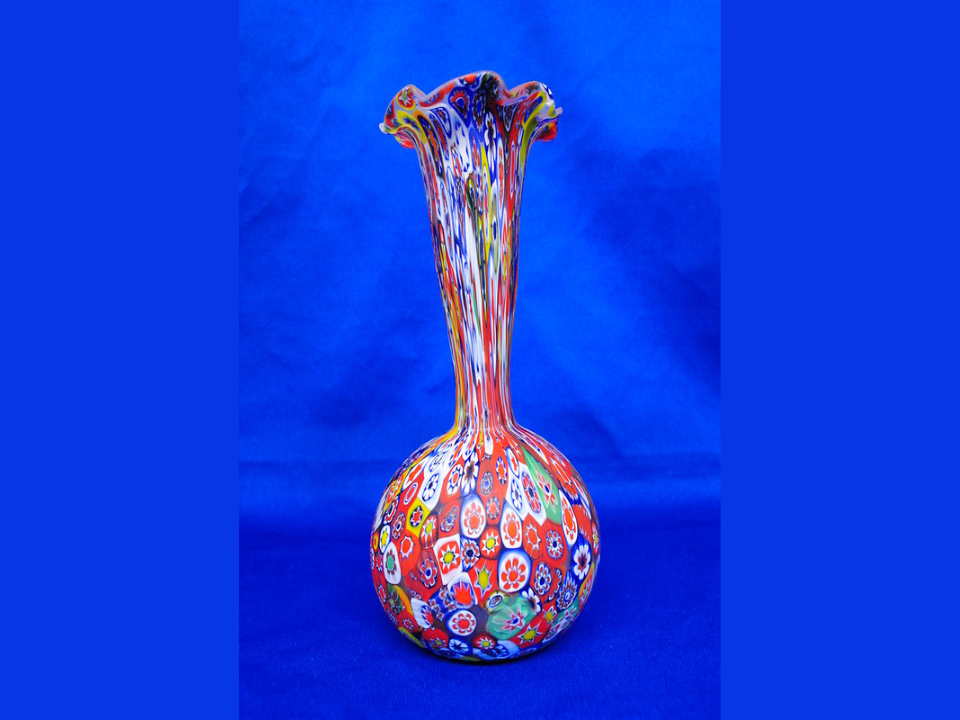
Murano glassmakers from Venice, Italy, are known for vibrant colors and intricate techniques. The Millefiori pattern uses hundreds of tiny floral patterns embedded within clear or colored glass. These vases were produced from the late 19th century and are still admired today.
Vintage Murano Millefiori vases can cost between $2,000 and $8,000 depending on their size, complexity, and color variation. The more layers of patterns and the tighter the design, the higher the value. Original stickers or etched marks from historic Murano furnaces also increase the piece’s appeal.
Loetz Phänomen Glass Vase
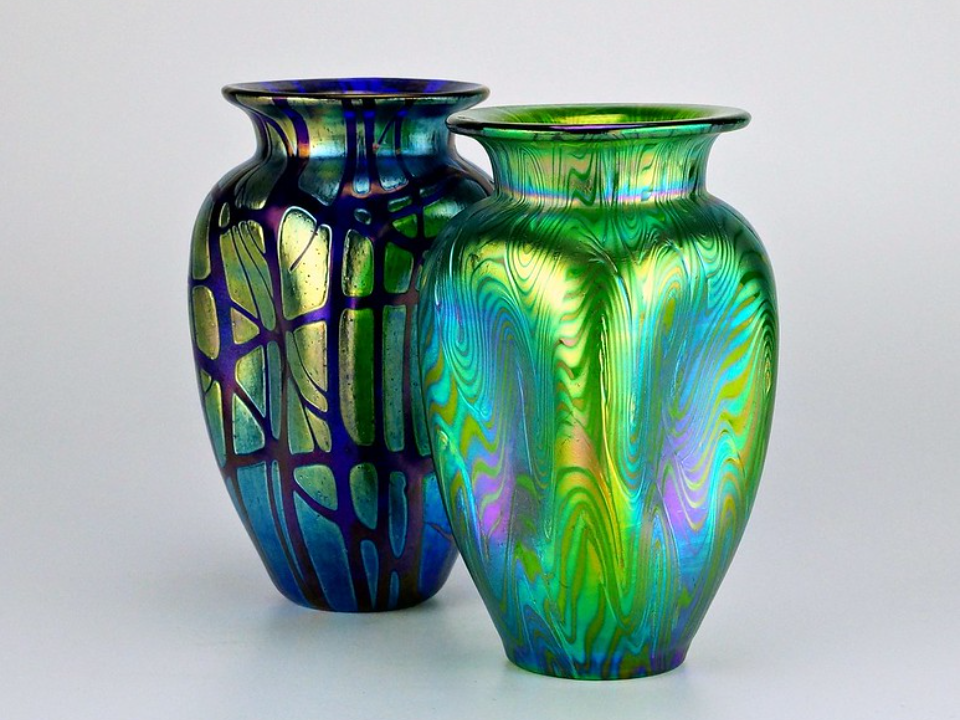
Loetz glass from Bohemia is known for its flowing iridescent patterns, particularly the Phänomen genre. These vases usually feature deep blues, purples, or greens with silvery or gold wave designs. Made between 1898 and 1905, these pieces were designed to compete with Tiffany’s work in the United States.
Collectors often seek Loetz vases with original shapes and strong color play. A good condition Loetz Phänomen vase can sell for $5,000 to $15,000 depending on its rarity. A signed piece or one with clear production documentation can increase in value.
Fenton Hobnail Opalescent Vase
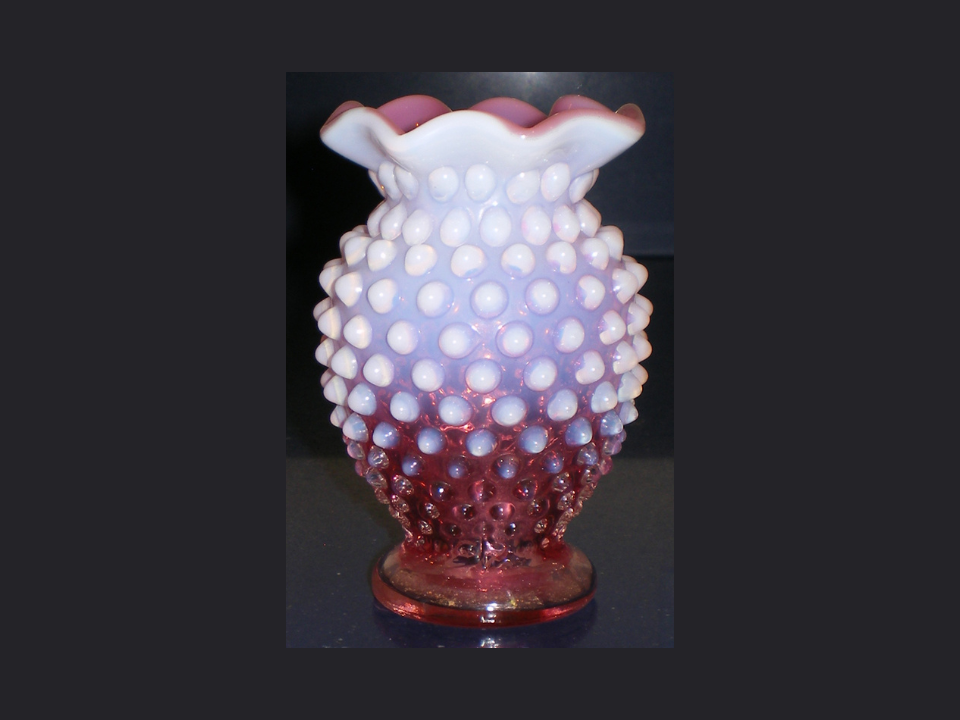
Fenton Art Glass began producing hobnail pieces in the early 1940s, and opalescent finishes quickly became a favorite. These vases often appear in colors like blue, cranberry, and milk glass, with a glowing white edge that adds charm.
A Fenton opalescent vase in top condition can range from $300 to $900 depending on color and shape. Some limited-run colors like plum or topaz can reach higher values. Collectors often appreciate the hand-finished quality and the feel of traditional American glasswork.
Northwood Carnival Glass Grape and Cable Bowl
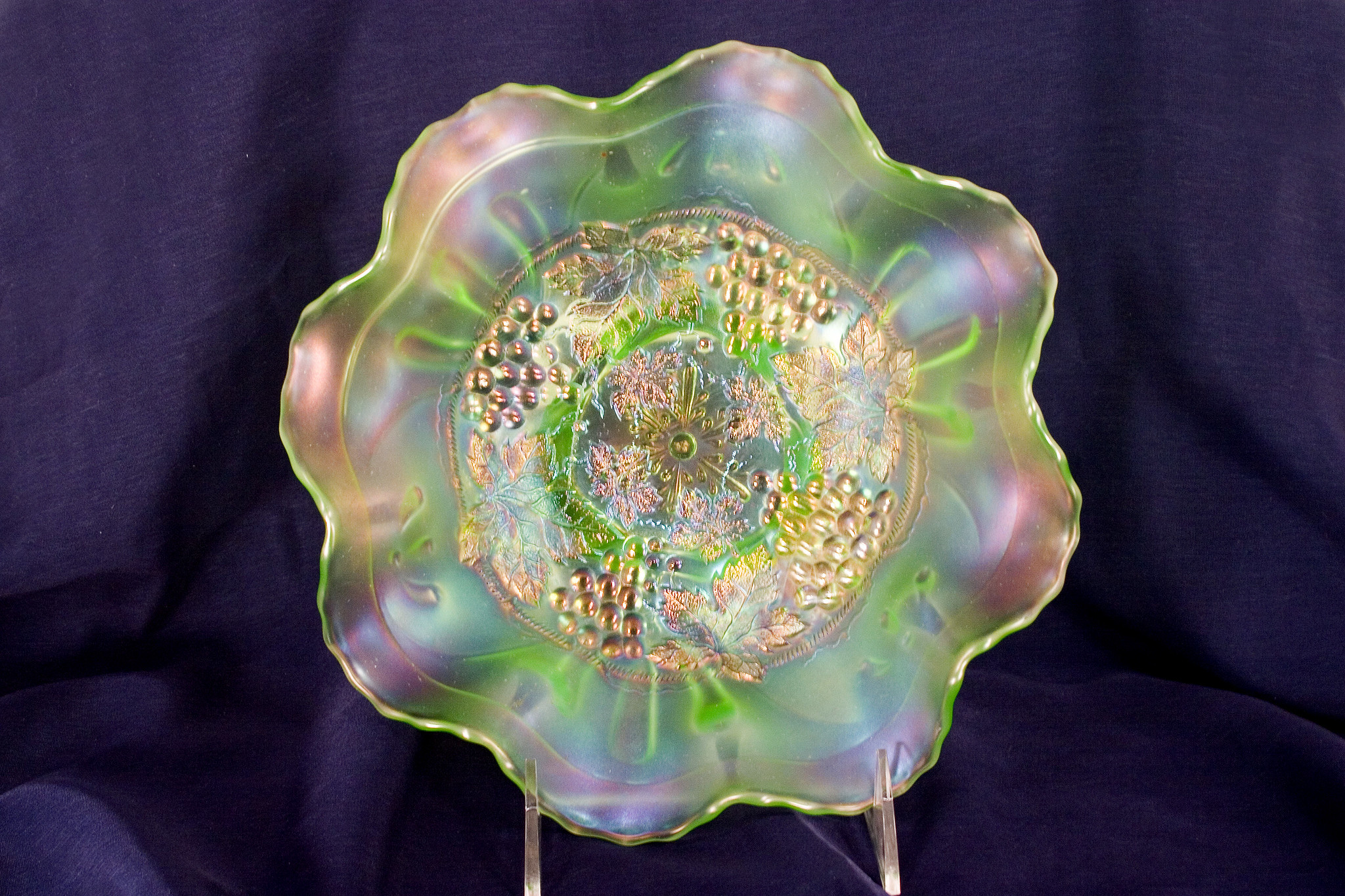
Northwood Glass Company created some of the most recognized carnival glass during the early 1900s. The Grape and Cable pattern is especially valued, often seen in deep purple, marigold, and blue hues with a metallic finish. These bowls reflect different colors when held to light and usually have an iridescent shine across the surface.
Prices for a well-preserved Northwood Grape and Cable bowl often range from $700 to $2,000. Rarer color variations such as aqua opal or ice blue can push the value even higher. Collectors look for crisp pattern details, strong iridescence, and original factory marks.
Mount Washington Burmese Glass Vase
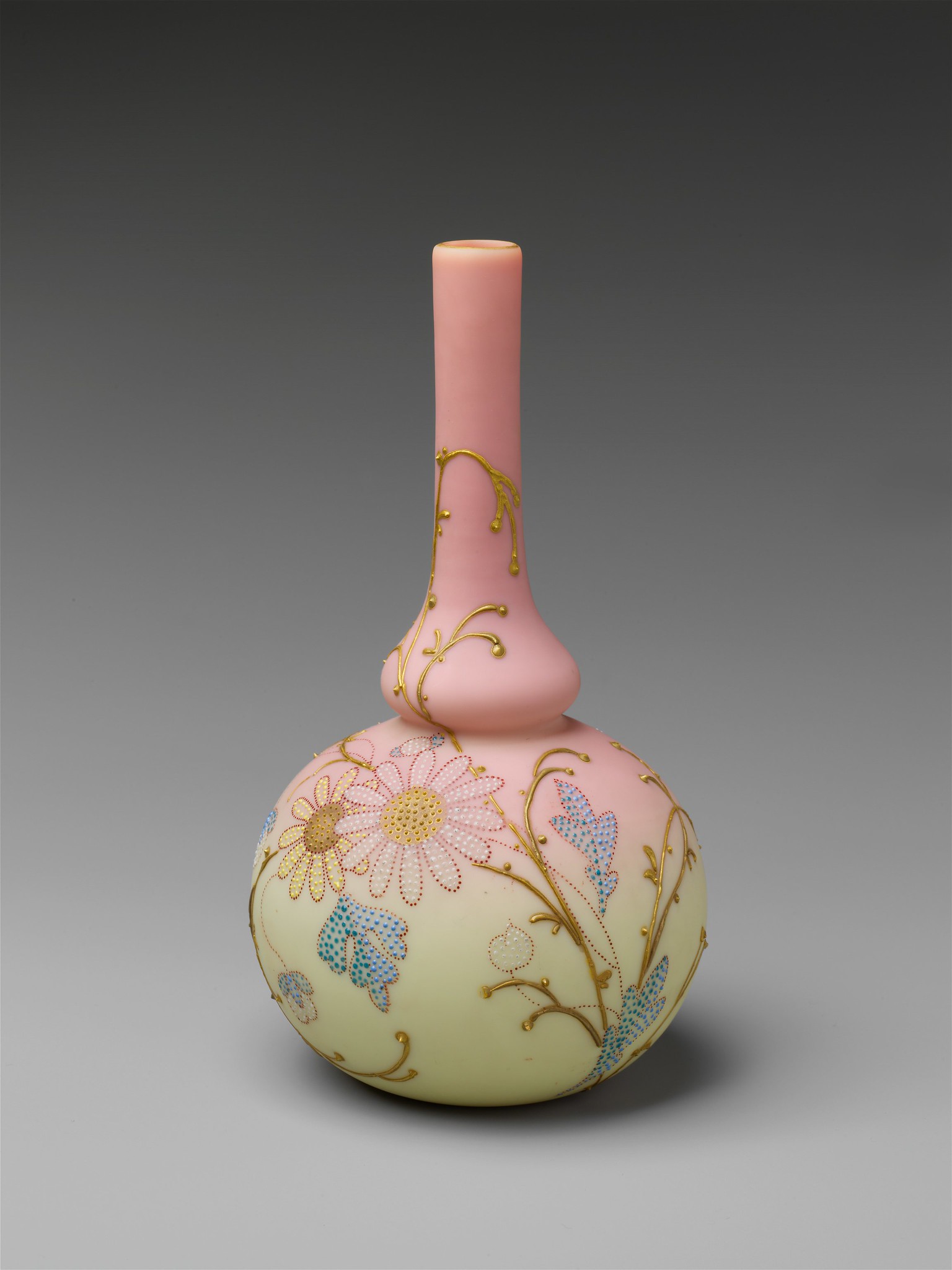
Burmese glass by Mount Washington Glass Company is known for its soft pink and yellow gradient. Made using uranium and gold in the formula, this glass changes color when exposed to heat and light. These vases often feature floral enamel decoration and were produced in limited quantities in the late 1800s.
Prices for a Mount Washington Burmese vase can start around $2,000 and go up to $7,000 depending on decoration and size. Vases with signed or painted details tend to carry higher value. Collectors appreciate both the delicate feel and the way the glass shifts in tone depending on lighting.
Bohemian Ruby Cut to Clear Decanter
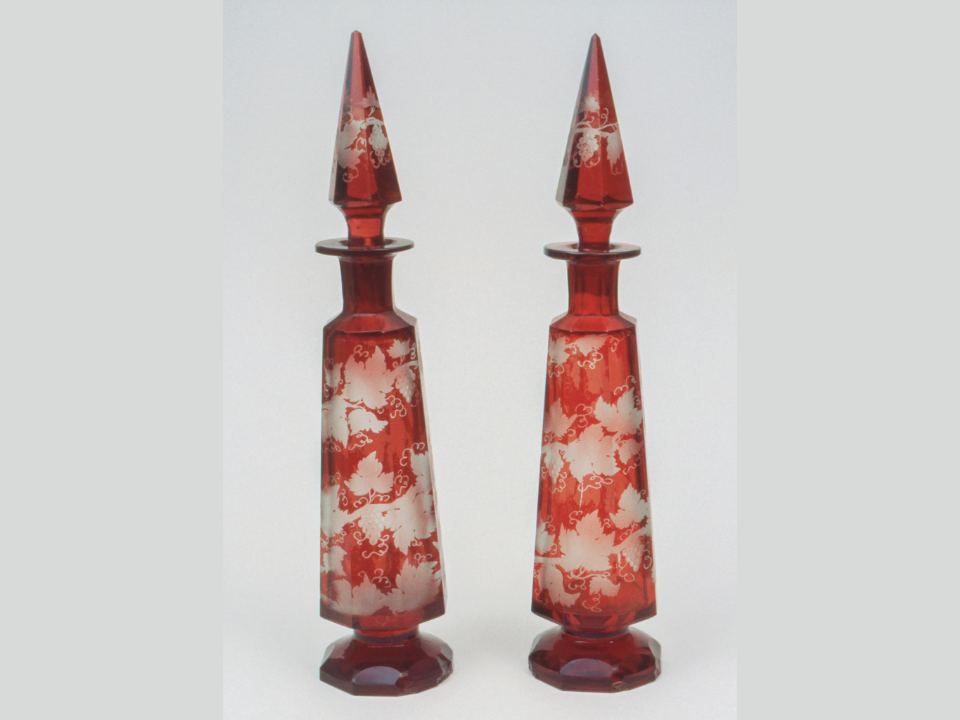
Bohemian glassmakers in what is now the Czech Republic created cut-to-clear pieces using a ruby-colored outer layer. They then carved through this layer to reveal patterns beneath, often in clear glass. These decanters stand out for their detailed engraving and vibrant red exterior.
An original Bohemian ruby decanter with matching stopper may bring in $2,500 to $6,000. Ornate patterns and crisp cuts increase appeal. Older examples from the 19th century are especially valuable when properly authenticated.
Heisey Alexandrite Glass Stemware
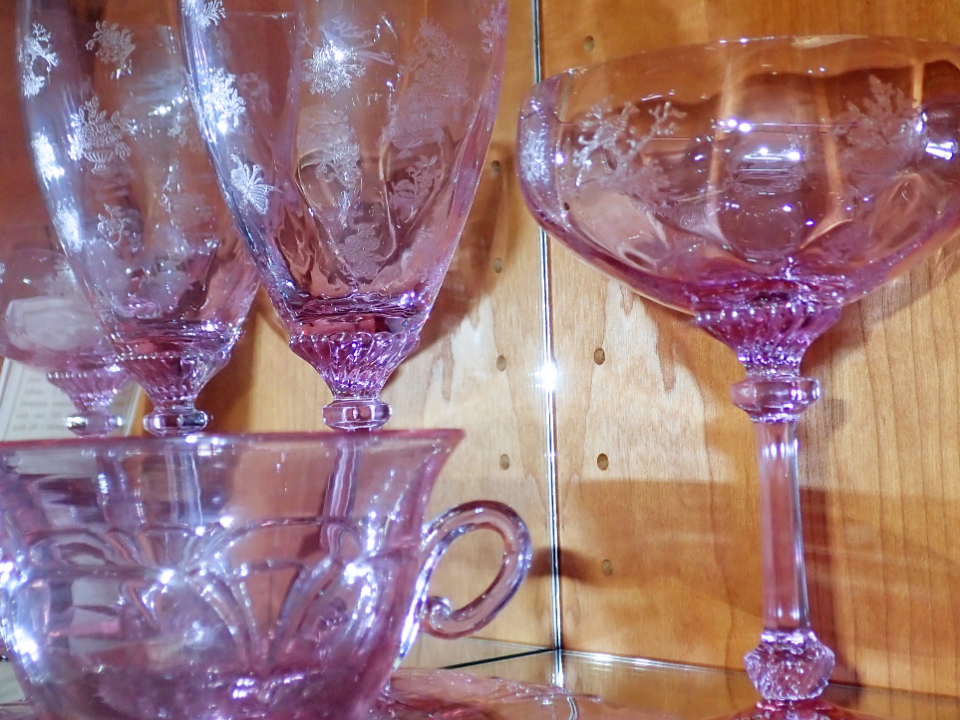
Heisey Glass Company produced Alexandrite glassware that appears lavender in natural light and shifts to blue under fluorescent lighting. This glass is collectible for its unique color-changing feature and clean lines. Most pieces date from the 1930s and 1940s.
Individual stemware pieces can sell from $300 to $800 each, with full sets reaching $4,000 or more. Items with strong color shift and original marks are especially desirable. Collectors often hunt for rare shapes such as tall goblets or etched variations.
Pairpoint Puffy Glass Lamp Shade
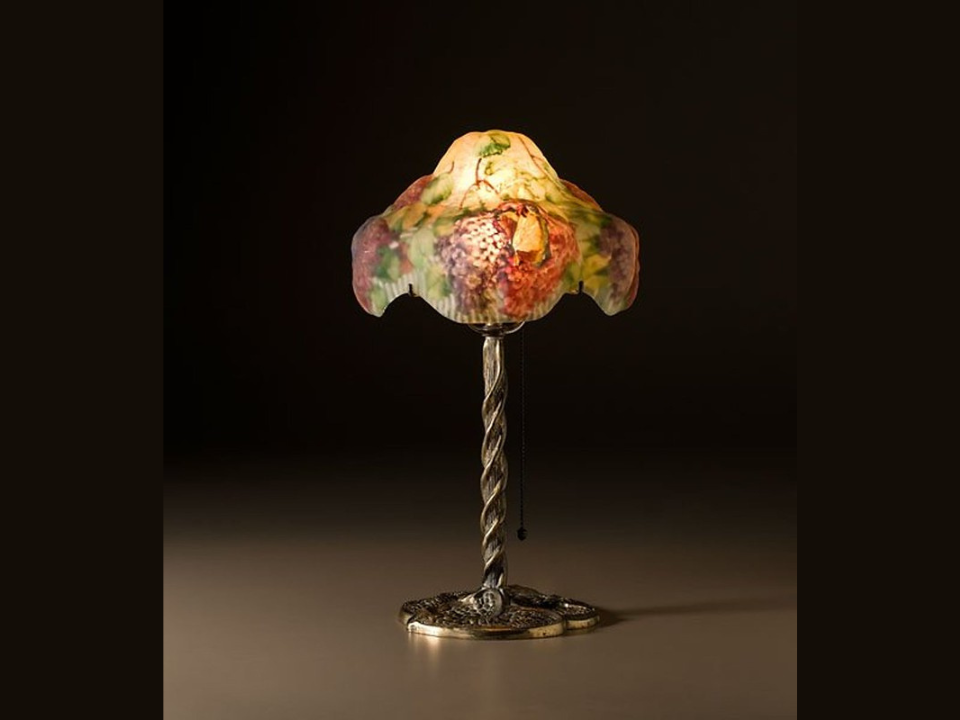
Pairpoint lamps are known for their colorful hand-painted puffy shades. The shades are made of reverse-painted molded glass that gives off a soft glow. Colors include rose, green, and sky blue, often in floral or nature-inspired designs.
A Pairpoint puffy lamp shade on its own can sell for $4,000 to $9,000. Complete lamps with original bases and wiring reach even higher. These items are rare due to their fragile nature and limited production runs.
This article originally appeared on Avocadu.
